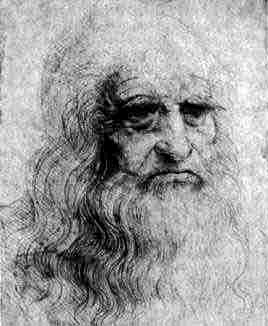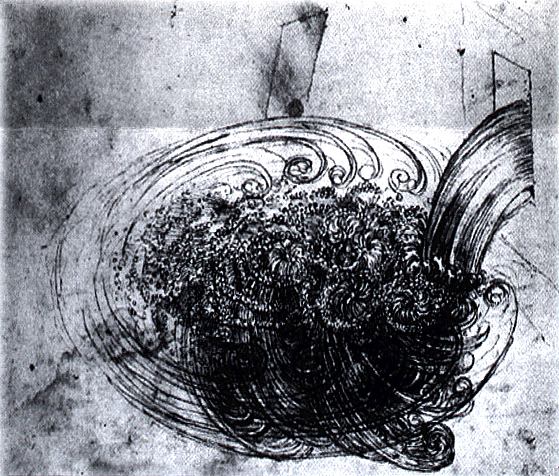|


|
|
"Leonardo da Vinci"
pioneered the flow visualization genre close to 500 years ago. The sketch
above--- a free water jet issuing from a square hole into a pool---represents
perhaps the world's first use of visualization as a scientific tool to
study a turbulent flow. Leonardo wrote (translated by Ugo Piomelli, University
of Maryland), "Observe the motion of the surface of the water, which resembles
that of hair, which has two motions, of which one is caused by the weight
of the hair, the other by the direction of the curls; thus the water has
eddying motions, one part of which is due to the principal current, the
other to the random and reverse motion." According to John L. Lumley,
Cornell University, Leonardo may have prefigured the now famous
Reynolds turbulence decomposition nearly 400 years prior to Osborne Reynolds'
own flow visualization and analysis! In describing the swirling water
motion behind a bluff body, da Vinci provided the earliest reference to
the importance of vortices in fluid motion: "So moving water strives to
maintain the course pursuant to the power which occasions it and, if it
finds an obstacle in its path, completes the span of the course it has
commenced by a circular and revolving movement." Leonardo accurately sketched
the pair of quasi-stationary, counterrotating vortices in the midst of
the random wake. Finally, da Vinci's words "... The small eddies are almost
numberless, and large things are rotated only by large eddies and not
by small ones, and small things are turned by both small eddies and large"
presage Richardson's cascade, coherent structures, and large-eddy simulations,
at least.
Reference: M.
Gad-el-Hak: Flow Control: Passive, Active, and Reactive Flow Management,
Cambridge University Press, 2000.
Contributed by Prof. M. Gad-el-Hak (University of Notre
Dame).
|
|